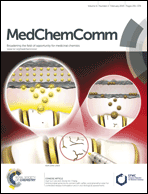从蜜蜂身上汲取灵感,scientists in South Korea have incorporated 一种用于蜂箱中的化合物,可制成一种具有持久抗菌性能的新型强生物材料。.

CAPE-loaded PMMA (left) was found to be stronger than gentamycin-loaded (right) PMMA
Bone cements have been used in surgery since the 1940s and work like a grout to fill the gaps between orthopaedic implants and bones.最常用的骨水泥是由一种叫做聚甲基丙烯酸甲酯的合成树脂制成的。或PMMA,and have recently been loaded with antibiotics,such as gentamycin,试图减少与医疗相关的感染。However,the addition of antibiotics has raised concerns over antibiotic resistance,potential carcinogenic effects and the reduced mechanical strength of PMMA.
To overcome these potentially harmful limitations,a team led by Jeong Ho Chang at theKorea Institute of Ceramic Engineering and Technology,have developed PMMA bone cement loaded withcaffeic acid phenethyl ester(角)。CAPE is an active component of bee propolis,a resin-like mixture collected by honey bees from various trees and buds and used to fill small gaps in the beehive.CAPE is thought to have antimicrobial,anti-inflammatory,antioxidant and anti-cancer effects and has already been approved for use in foods,drinks and cosmetics by the Food and Drug Administration.
The researchers were not only able to demonstrate that CAPE-loaded PMMA is an effective antimicrobial against Staphylococcus aureus,but it also has much better compressive strength than antibiotic-loaded PMMA.这种令人印象深刻的强度被认为是由于PMMA和CAPE之间通过均匀加载增强的化学键造成的更高的填充密度所致。In contrast,conventional antibiotic-loaded bone cements are not uniformly mixed and have low loading efficiencies,so the compressive strength is similar to native PMMA.This also explains why CAPE–PMMA exhibits more controlled and sustained antimicrobial release compared to bone cement loaded with gentamycin.
Antoni Tomsia,a biomaterials expert specialising in treatments for bone defects and diseases at the Lawrence Berkeley National Laboratory,加利福尼亚大学US,thinks that the incorporation of natural antimicrobials is a good idea.However,he emphasises that antimicrobial implants must go hand-in-hand with ‘provider hand hygiene,patient decolonisation efforts,or environmental decontamination,plus sterilisation,to prevent infections.'
Initial studies were carried out in rabbits and Chang believes that CAPE-loaded PMMA bone cement could be used for human clinical applications after therapeutic efficacy evaluation.‘We are trying to discuss and work with a medical orthopaedics doctor and I think we can report the new clinical data in the near future,' reveals Chang.
Story first appeared in新利手机客户端Chemistry WorldNovember 2014,written byThadchajini Retneswaran.
李惠善和张永和的文章题为Antimicrobial spine-bone cement with caffeic acid phenethyl ester for controlled release formulation andin vivobiological assessments‘ featured on the cover of issue 2的MedChemComm











